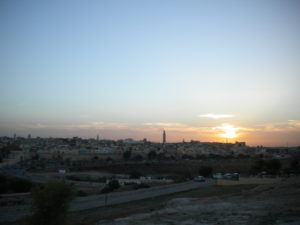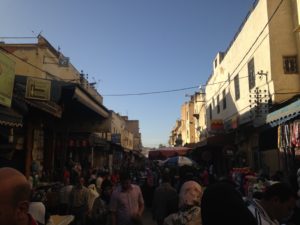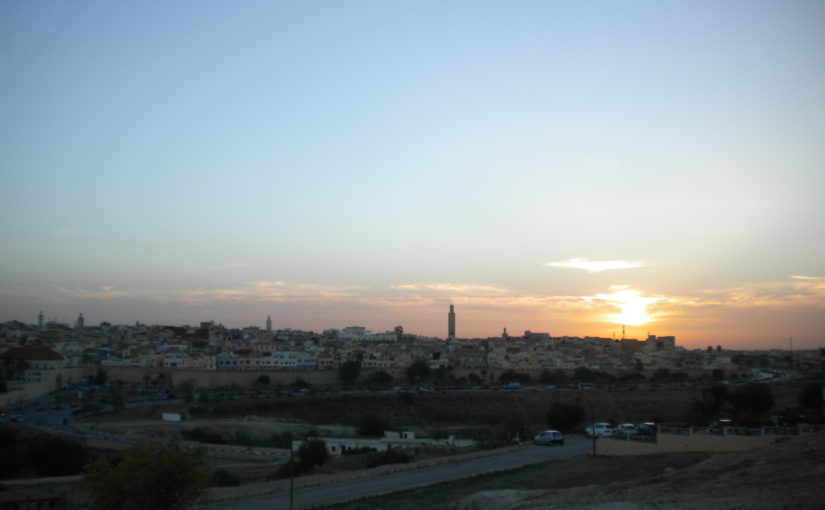With a handful of traveling experiences under my belt, it still amazes me how you can hop on one mode of transportation, and when you step off you find yourself in culture so different you feel like you’re in a different world.
While I thought my traveling prepared me for anything, I wasn’t even close to being prepared for what I found when I stepped off the train in Morocco.

Over the holiday weekend, or the “puente” as they call it in Spain, I took advantage of the extra days off to visit a high school friend studying in Meknes, Morocco. I traveled alone to Meknes, which worried my parents and program director, but gave me a sense of independence and confidence as a world traveler.
As I traveled first by car through Spain, then by boat across the Strait of Gibraltar, by car again and eventually by train, each phase brought me deeper into a culture unlike any I had ever experienced.
The first major difference I encountered was the language barrier. Morocco’s official language is Arabic, however many people can speak French. As a Spanish student, this proved to be a bit challenging. Luckily, my friend had a little practice navigating the language barrier, so I took her lead throughout my visit.
My first full day in Meknes was filled with everything Moroccan. We walked around the city, eventually making our way to the medina. A medina is the original part of a Moroccan city and acts as the city center. Medinas are surrounded by a wall, and they are often the referred to as the “old city.” Almost every Moroccan city has a medina, so I was thrilled that I got to visit the medina in Meknes.
Almost immediately upon walking into the medina, you could see the difference between old city and the modern city. Narrow streets filled the medina, winding their way through homes and shops. Most of the streets were so narrow it would be impossible for cars to drive through. Children played in the streets and cats meandered their way from corridor to corridor. The extensive network of streets reminded me of a life-size maze, easy to get lost if you weren’t familiar with the layout.
Like many old cities, the medina had a massive plaza buzzing with activity. There was a snake charmer, musicians and other people showcasing their talents. We were only there during the afternoon, but during the evening the square is crowded with even more street performers.
The medina was also home to a busy market. Locals and tourists alike made their way through the market. From produce to spices, clothing to toiletries, household items to electronics, the market had it all.

In the market, it is common to barter with the vendors. The best way to barter is to first watch a local do it, then follow their lead. Because I didn’t know any Arabic or French, I relied solely on body language and punching in numbers to a calculator to barter my prices down. Nonetheless, I walked out of the market trying to figure out how I was going to fit everything into my backpack when I returned home.
A visit to the medina, however, would not be complete without hearing the call to prayer. Morocco is an Islamic nation, and so their religion has a huge influence on the culture. The medina is filled with minarets, or tower-like structures from which the call to prayer is made five times every day.
From a hill near the medina, we watched the sunset and listened to the call to prayer. From the minarets throughout the medina, the sound of the call washed over the city. It reminded me of church bells on Sunday mornings; only different people from each minaret sang the call to prayer. The call to prayer and the sunset complemented each other beautifully.
But, before we knew it, the call to prayer was over, the sun had set and yet a week later, I’m still trying to take it all in.
